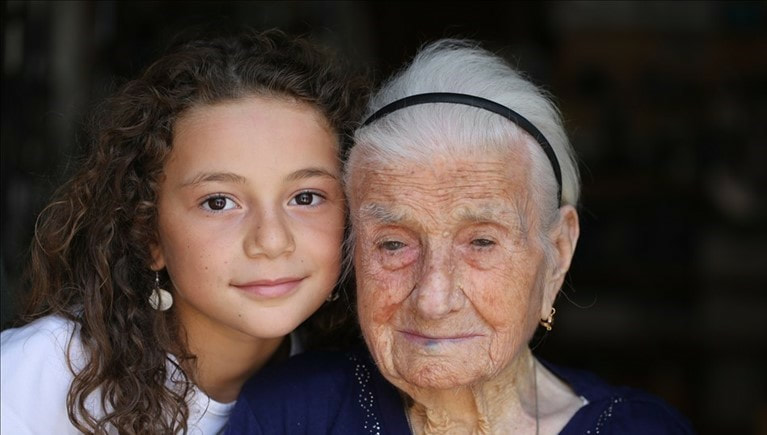 Procession in Itri, Lazio leading their way toward the bonfire Procession in Itri, Lazio leading their way toward the bonfire In Puglia, Basilicata, Lazio, Umbria, Lombardy and other regions of Italy, many towns and villages celebrate la Festa di San Giuseppe (March 19th) in a unique way... by lighting Fuochi nella Notte, fires of the night--or bonfires. The bonfires and festivities are on various days (depending on the town), from March 17th through the 19th. Known by different names, the bonfire festival might also contain the words Torciata (torch), Fiaccolata (torchlight procession), Falò (fire). For example, in Tuscany's Pitigliano, the event is called Torchiata di San Giuseppe with people dressed in medieval costumes and a procession of men and boys dressed in hooded monk's robes carrying flaming reed torches that will help build the bonfire. After the bonfire has burned down to ashes, tradition calls for people to collect and keep the ashes, ensuring their good luck in the coming spring. As with other holidays beginning in the New Year and throughout lent, the lighting of bonfires has a long history going back to the time of pagan worship. Through the last 2000 years, the activity has morphed into a Christian tradition. This tradition also coincides with the need to burn the trimmings from vines, olive trees and other woody crops. While Christians claim the fires are a representation of the good father, Saint Joseph, striving to keep the infant Jesus warm during winter nights, others say the tradition is from the ancient Romans celebrating the dark winter being overtaken by the light of spring. Many modern observers say it's just another way for fun-loving Italians to throw yet another party, for as with most festa and sagre, there is always the food, and a great sense of community.
And if the truth is to be told, Italians love bonfires so much, you will also come across other Fuochi on other saint day festivals across Italy. --GVI Maria Giuseppa Robucci, better known as Nonna Peppa in Italy, is currently the oldest living person in Europe. Nonna Peppa has yet another birthday coming up... on March 20th she will turn 116! This centenarian lives today in Apricena, Puglia with her daughter Filomena and her family. She was born in 1903 in nearby Poggio Imperiale where she married farmer Nicola Nargiso and bore five children, nine grandchildren and 16 great-grandchildren. She managed a local bar along with her husband for many years, is very religious and claims to have known Saint Padre Pio personally. For the last few years she holds the title of honorary mayor of Poggio Imperiale, making her the oldest mayor in Italy. Her secret to longevity? Nonna Peppa doesn't drink or smoke. --GVI Today, March 8th, is International Women's Day and in Italy it's the time when mimosas are blossoming with their golden color. All across Italy women are presented lovingly with a bouquet of mimosa flowers to say "Thank you"... thank you for being Mama, that you for being my sister, thank you for being a great daughter, thank you for being a fantastic co-worker, or thank you for being a wonderful wife. March 8th is called La Festa delle Donne in Italy. While in Italy the day has become almost like Mother's Day here in the States, the observance started in 1909 by the Socialist Party of America, and was held in New York City after a sweat shop factory burned to the ground, killing 145 workers--mostly young women who were underpaid and had to work in unsafe conditions. This event and the observance was the de facto birth of the modern Women's Movement. Sadly, in Italy and around the world, women are still struggling to achieve equal pay for equal work, among many other issues. The tradition of a gift of mimosas dates back to 1946 when the feminists, Rita Montagnana and Teresa Mattei, came up with the idea of women offering the bouquets as a symbol of mutual respect, sisterhood and support. Mimosa was one of the few flowers in bloom on the date. The Mimosa also represents strength and endurance, being a tough plant that can survive adverse conditions in Italy. Oddly, being originally a Socialist observance, it seems that in Italy, the Festa delle Donne has been commercialized... another day where bouquets of Mimosa tied with yellow ribbons are sold in supermarkets, bars and tobacconists all over Italy. It's become expected that fathers, sons and husbands also give the flowers to the women in their lives. The commercialization of La Festa delle Donne has made it more like Mothers Day and might be losing some of its original meaning based on solidarity of women's issues. Even chocolate companies offer their dolci in yellow packaging. In some parts of Italy the Festa is celebrated on the closest Sunday to March 8th, and special events are held, such as a procession of mimosa decorated gondolas in Venice and a regatta for female rowers. . --GVI The commercialization of the Women's Movement in Italy From Grand Voyage Italy to all Women... Auguri!
Support each other and keep up the fight for equality! |
On AMAZON:
|
















 RSS Feed
RSS Feed

